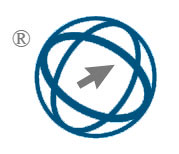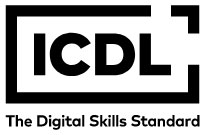Towards an Ontological-based CIM Modeling Framework for IoT Applications
Abstract
Few works addressed contributions of ontologies to Computation Independent Modeling (CIM) of Internet of Things’ (IoT) applications. This work targets CIM artefacts developed using a combination of a goal-oriented requirements (KAOS) and a service-oriented (SoAML) modeling frameworks. This paper proposes an ontological-based framework intended to help CIM modelers in their preliminary analysis of IoT applications. We adopt the ontology reuse approach, an approach often used by the ontology engineering community, where specific ontology fragments are selected, adapted and/or refined, and merged. We use OntoUML to describe our fragments. The OpenPonk tool is used to edit and verify the syntax and
the semantics of these fragments’ models. The results of our contribution are summarized as follows. Improving the semantics carried by the metamodels of KAOS and SoaML modeling languages, through our proposed conceptualization grounded by the Unified Foundational Ontology (UFO), a sound ontological framework; setting a link between our proposed KAOS and SoaML ontology fragments; designing a (partial) IoT domain ontology to be integrated into our proposed CIM. An illustrative example, showing how to instantiate selected ontology fragments, demonstrates the applicability of our results to IoT applications.
Full Text:
PDFReferences
M. Ahmad, J.-M. Bruel, R. Laleau, and C. Gnaho. Using relax, sysml
and kaos for ambient systems requirements modeling. In International
Conference on Enterprise Information Systems (ICEIS). SCITEPRESS,
A. A. Andaa and D. Amyot. Self-adaptation driven by sysml and goal
models – a literature review. e-Informatica Software Engineering Journal
(EISEJ), 16, 2022.
S. Assar. Model driven requirements engineering mapping the field and
beyond. In Model Driven Requirement Engineering Workshop MoDRE.
IEEE, 2014.
U. Asmann, S. Zschaler, and G. Wagner. Ontologies, meta-models and
the model-driven paradigm. In Ontologies for Software Engineering and
Software Technology, chapter 9, pages 248–273. Springer Berlin Heidelberg,
edition, Oct 2010.
P. P. F. Barcelos, V. A. dos Santos, F. B. Silv, M. E. Monteiro, and
A. S. Garcia. An automated transformation from ontouml to owl and
swrl. In CEUR Workshop. ceur-ws.org, 2013.
C. H. Bernabe, V. E. S. Souza, R. de Almeida Falbo, R. S. S. Guizzardi,
and C. Silva. Goro 2.0: Evolving an ontology for goal-oriented requirements
engineering. In Advances in Conceptual Modeling ER, 2019.
M. Bettaz and M. Maouche. Towards a new ontology-based descriptive
language: Ontoobject-z. In International Conference on Contemporary
Computing and Informatics (IC3I). IEEE, 2023.
B. F. B. Braga, J. P. A. Almeida, G. Guizzardi, and A. B. Benevides.
Transforming ontouml into alloy: towards conceptual model validation
using a lightweight formal method. Innovations in Systems and Software
Engineering, 6, 2010.
CCMI. Openponk platform. https://ccmi.fit.cvut.cz/tools/openponk/,
CCMI Research Group, Faculty of Information Technology, Czech
Technical University in Prague.
B. Costa, P. F. Pires, and F. C. Delicato. Modeling soa-based iot applications
with soaml4iot. In World Forum on Internet of Things (WF-IoT).
IEEE, 2019.
I. C. Costa and J. M. P. de Oliveira. Go4soa: Goal-oriented modeling
for soa. In International Conference on Web Information Systems and
Technologies. SCITEPRESS, 2016.
L. O. B. da Silva Santos, G. Guizzardi, and R. S. S. Guizzardi. Gso:
Designing a well-founded service ontology to support dynamic service
discovery and composition. In Enterprise Distributed Object Computing
(EDOC). IEEE, 2009.
D. Dermeval, J. Vilela, I. I. Bittencourt, J. Castro, S. Isotani, P. Brito,
and A. Silva. Applications of ontologies in requirements engineering: a
systematic review of the literature. Requirements Engineering, 21:405–
, 2016.
C. Diamantini, A. Freddi, S. Longhi, D. Potena, and E. Storti. A goaloriented,
ontology-based methodology to support the design of aal environments.
Expert Systems With Applications, 64:117–131, 2016.
B. Elvesater, C. Carrez, P. Mohagheghi, A.-J. Berre, S. G. Johnsen,
and A. Solberg. Model-driven service engineering with soaml. In Service
Engineering Book, chapter 2, pages 25–54. Springer, 2011.
S. J. T. Fotso, M. Frappie, R. Laleau, A. Mammar, and M. Leuschel.
Formalisation of sysml/kaos goal assignments with b system component
decompositions. In Integrated Formal Methods (IFM), pages 377–397.
LNCS, 2018.
X. Franch, L. L´opez, C. Cares, and D. Colomer. The i* framework
for goal-oriented modeling. In Domain-Specific Conceptual Modeling:
Concepts, Methods and Tools, chapter 22, pages 485–506. Springer, 2016.
G. Giancarlo, B. B. Alessanderc, F. C. M., P. Danieled, A. J. P. A.C,
and P. S. Tiagoa. Ufo: Unified foundational ontology. Applied Ontology,
(1):167–210, 2022.
N. Guarino. Formal ontologies and information systems. In Formal
Ontology in Information Systems (FOIS). IOS Press, 1998.
G. Guizzard and G. Wagner. Using the unified foundational ontology
(ufo) as a foundation for general conceptual modeling languages. In
Theory and Applications of Ontology: Computer Applications, chapter 8,
pages 175–196. Springer, 2010.
G. Guizzardi, G. W. R. de Almeida Falbo, R. S. S. Guizzardi, and
J. P. A. Almeida. Applying the ufo ontology to design an agent-oriented
engineering language. In Conceptual Modeling ER. Springer, 2013.
G. Guizzardi, R. de Almeida Falbo, and R. Guizzardi. Grounding software
domain ontologies in the unified foundational ontology (ufo): The
case of the ode software process ontology. In Conferencia Iberoamericana
de Software Engineering, 2008.
R. S. S. Guizzardi and G. Guizzardi. Applying the ufo ontology to design
an agent-oriented engineering language. In Advances in Databases and
Information Systems (ADBIS). Springer, 2010.
R. S. S. Guizzardi, G. Guizzardi, A. Perini, and J. Mylopoulos. Towards
an ontological account of agent-oriented goals. In Software Engineering
for Large-scale Multi-Agent Systems (SELMAS). Springer Verlag, 2006.
L. Kadakolmath and U. D. Ramu. Goal-oriented modeling of an urban
subway control system using kaos. Indonesian Journal of Computer
Science (IJCS), 12, 2023.
D. Man. Ontologies in computer science. DIDACTICA MATHEMATICA,
(1):43–46, 2013.
R. Matulevicius, P. Heymans, and A. L. Opdahl. Ontological analysis of
kaos using separation of reference. In Contemporary Issues in Database
Design and Information Systems Development, chapter 2, pages 37–54.
IGI Global, 2007.
J. C. Nardi, J. P. A. Almeida, P. H. A. da Silva, and G. Guizzardi.
An ontology-based diagnosis of mainstream service modeling languages.
In International Enterprise Distributed Object Computing Conference
(EDOC). IEEE, 2019.
J. C. Nardi, R. de Almeida Falbo, J. P. A. Almeida, G. Guizzardi, L. F.
Pires, M. J. van Sinderen, and N. Guarino. Towards a commitmentbased
reference ontology for services. In Enterprise Distributed Object
Computing (EDOC). IEEE, 2013.
J. C. Nardi, R. de Almeida Falbo, J. P. A. Almeida, G. Guizzardi,
L. F. Pires, M. J. van Sinderena, N. Guarino, and C. M. Fonseca. A
commitment-based reference ontology for services. Information Systems,
:263–288, 2015.
NEMO. Goal oriented requirements ontology (goro).
https://dev.nemo.inf.ufes.br/seon/GORO.html. Research Group.
J. C. Nwokeji, T. Clark, and B. S. Barn. Towards a comprehensive metamodel
for kaos. In Model-Driven Requirements Engineering (MoDRE).
IEEE, 2013.
OMG. Service oriented architecture modeling language (soaml) specification,
v 1.0.1. https://www.omg.org/spec/SoaML/1.0.1/PDF. Object
Management Group.
M. A. Orellana, J. R. Silva, and E. L. Pellini. A model-based and
goal-oriented approach for the conceptual design of smart grid services.
Machines, 9, 2021.
I. Osman, S. B. Yahia, and G. Diallo. Ontology integration: Approaches
and challenging issues. Information Fusion, 71:38–63, 2021.
R. Pergl, T. P. Sales, and Z. Rybola. Towards ontouml for software
engineering: From domain ontology to implementation model. In Model
and Data Engineering (MEDI), 2013.
Y. Purnomo, R. Doss, N. B. Suhardi, and N. B. Kurniawan. Consolidating
service engineering ontologies building service ontology from soa
modeling language (soaml). International Journal of Computer and Information
Engineering, 12, 2018.
G. Reggio. A uml-based proposal for iot system requirements specification.
In International Workshop on Modelling in Software Engineering
(MiSE), pages 9–16. IEEE/ACM, IEEE, 2018.
C. Reginato, J. Salamon, and M. P. Barcellos. Ontology integration approaches:
A systematic mapping. In CEUR Worshops. CEUR-WS.org,
Z. Rybola and R. Pergl. Towards ontouml for software engineering:
Transformation of rigid sortal types into relational databases. In Federated
Conference on Computer Science and Information Systems (FedCSIS),
F. M. Suchanek. Ontouml specification.
https://ontouml.readthedocs.io/en/latest/, 2018.
M. Tabatabaie, F. A. C. Polack, and R. F. Paige. Kaos-b a goal-oriented
process model for eis. In International Workshop on Modelling, Simulation,
Verification and Validation of Enterprise Information Systems
(ICEIS). SCITEPRESS, 2010.
I. Tounsi, Z. Hrichi, M. H. Kacem, A. H. Kacem, and K. Drira. Using
soaml models and event-b specifications for modeling soa design patterns.
In International Conference on Ambient Systems, Networks and
Technologies (ANT). Elsevier, 2012.
S. Tueno, R. Laleau, A. Mammar, and M. Frappier. Towards using
ontologies for domain modeling within the sysml/kaos approach. In
International Requirements Engineering Conference Workshops (REW).
IEEE, 2017.
A. van Lamsweerde. The kaos meta-model: Ten years after. Technical
report, Universite Catholique de Louvain, 1993.
V. Werneck, A. de Padua Oliveira, and J. C. S. do Prado Leite. Comparing
gore frameworks: I-star and kaos. In Workshop on Requirement
Engineering (WER), 2009.
I.-L. Yen, F. Bastani, H. M. Wei Zhu, S.-Y. Hwang, and Y. Zhang.
Service-oriented iot modeling and its deviation from software services.
In Symposium on Service-Oriented System Engineering. IEEE, 2018.
F. Zickert. Evaluation of the goal-oriented requirements engineering
method kaos. In Americas Conference on —Information Systems (AMCIS),
DOI: https://doi.org/10.31449/inf.v48i4.5845

This work is licensed under a Creative Commons Attribution 3.0 License.









